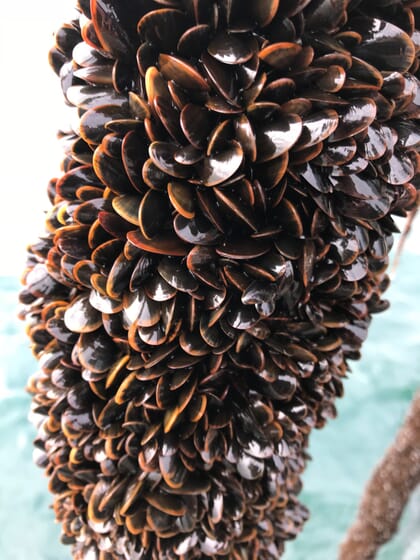The researchers also found that there are seasonal variations in the risk of wastewater contamination: with cold and wet weather making contamination from agricultural sources more likely.

Human wastewater poses a global threat to seafood safety and the financial stability of the aquaculture industry. Researchers at the Dauphin Island Sea Lab and the University of South Alabama, in collaboration with the US Food and Drug Administration, tested multiple indicators of wastewater contamination to identify potential sources of contamination to local shellfish farms and aid management efforts.
Successful management of wastewater contamination relies on understanding the sources of wastewater to a system. Established metrics to assess water quality and wastewater sources include bacterial and viral indicators, nutrient concentrations, and stable isotope ratios.
Along with these sources, the team tested artificial sweeteners as a wastewater indicator. The analysis of artificial sweeteners emerged recently as a method to better trace human-specific wastewater sources. Artificial sweeteners, such as acesulfame and sucralose, are slow to degrade and are not found in nature. They are also rarely found in commonly used fertilisers or livestock feed.
Individually, these water quality indicators provide some evidence of the presence of wastewater and associated microbes of human concern. The research team found that using multiple indicators in combination provided a greater potential for source identification and detected seasonal variation in contamination risk.

The study focused on shellfish farms in Portersville Bay, Alabama, in Mississippi Sound on the northern Gulf of Mexico coasts, but has implications for shellfish farms in any system potentially affected by multiple sources of wastewater contamination.
Potential wastewater sources sampled for the study included a wastewater treatment plant outfall and industrial, residential, and agricultural areas near the shellfish farms. To understand how environmental conditions may affect wastewater source contributions, samples were collected in wet and dry conditions and during warm and cold periods.
Overall, indicator source dominance depended on environmental conditions, with wastewater treatment plant outfall and residential sources conveying human-specific indicators to farms year-round, while agricultural and industrial sites contributed additional faecal coliforms during cold wet periods. The study additionally found evidence that disturbance such as some types of construction activity may contribute faecal indicators to adjacent waters.
The use of multiple indicators will aid managers to detect and define wastewater sources, identify targets for monitoring or remediation, and manage shellfish areas in estuaries with a mosaic of land-derived wastewater sources.
Read the full study in the Management Applications section of the journal Estuaries and Coasts.




